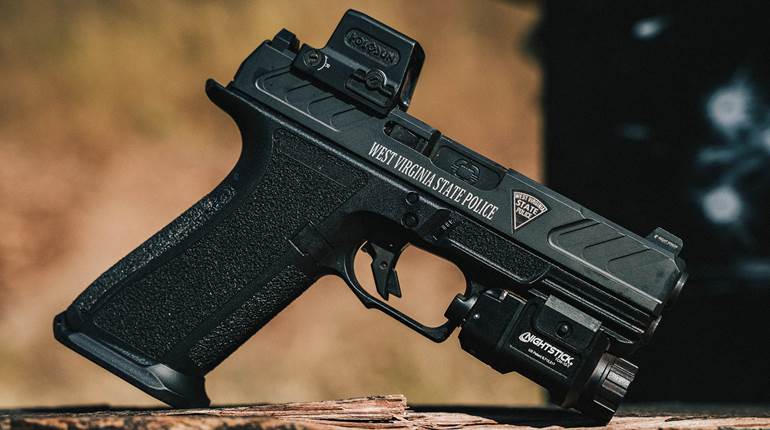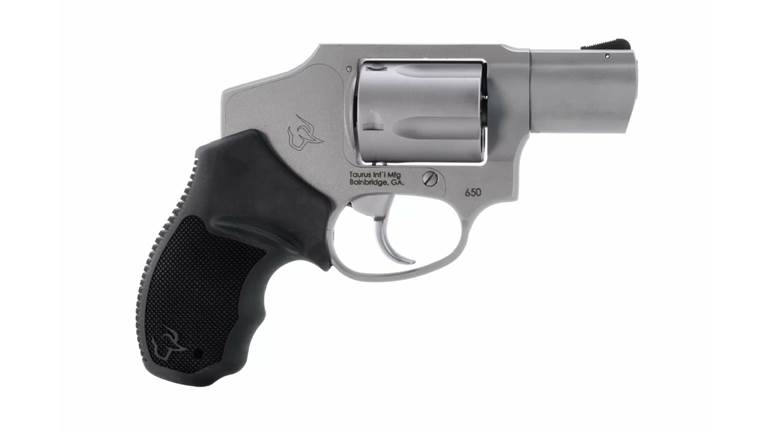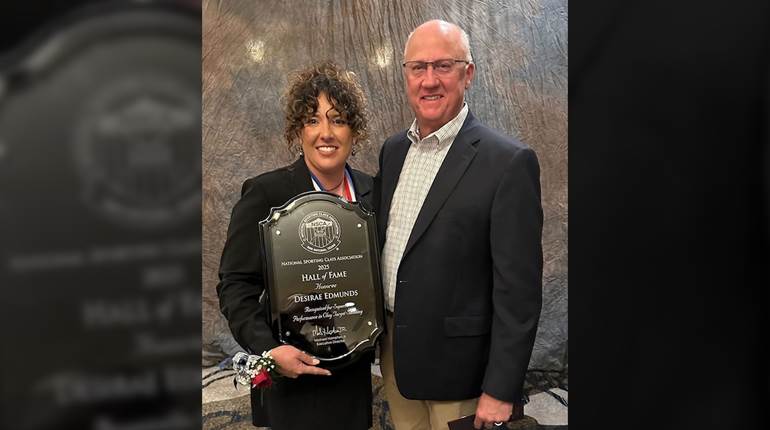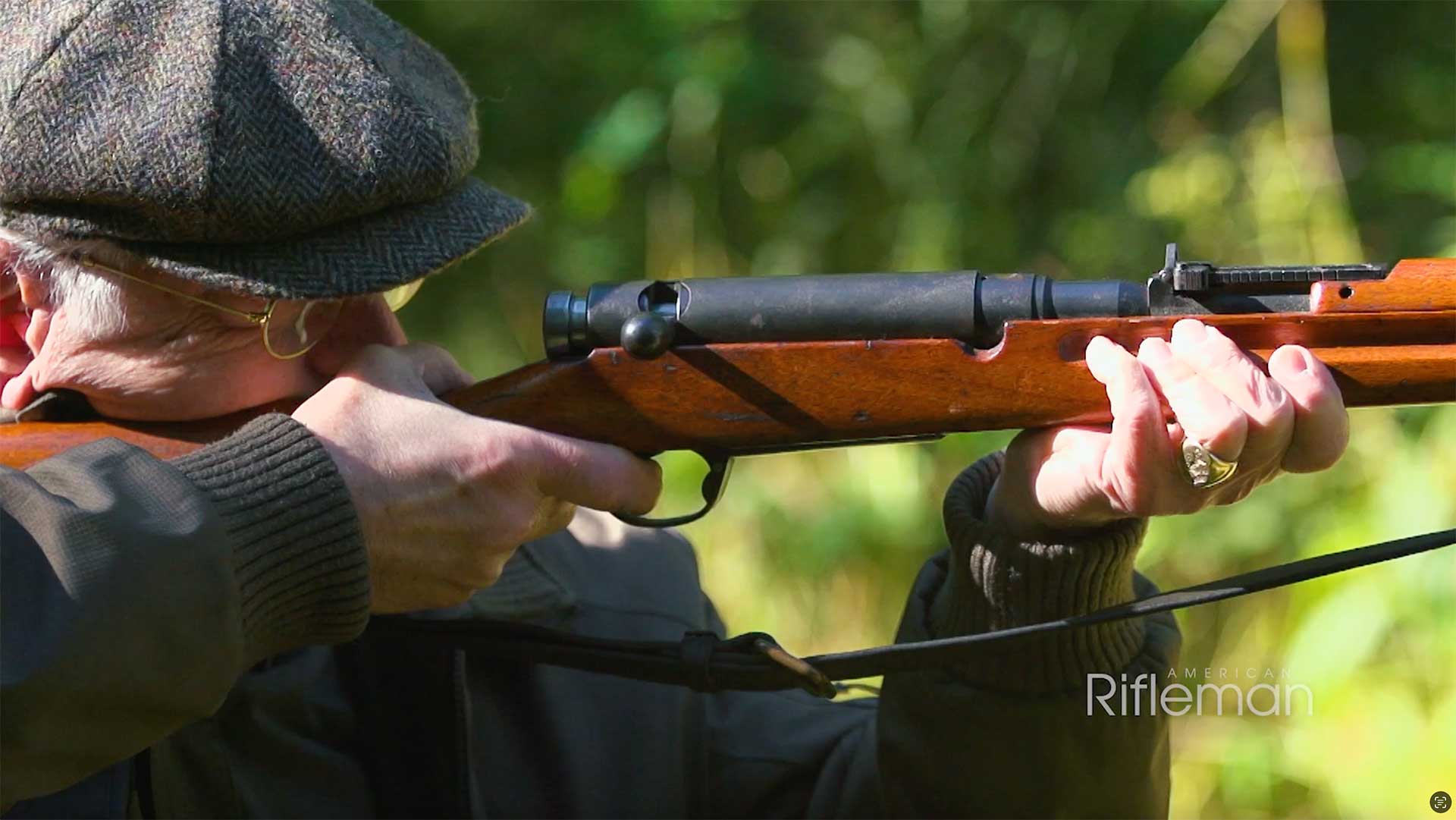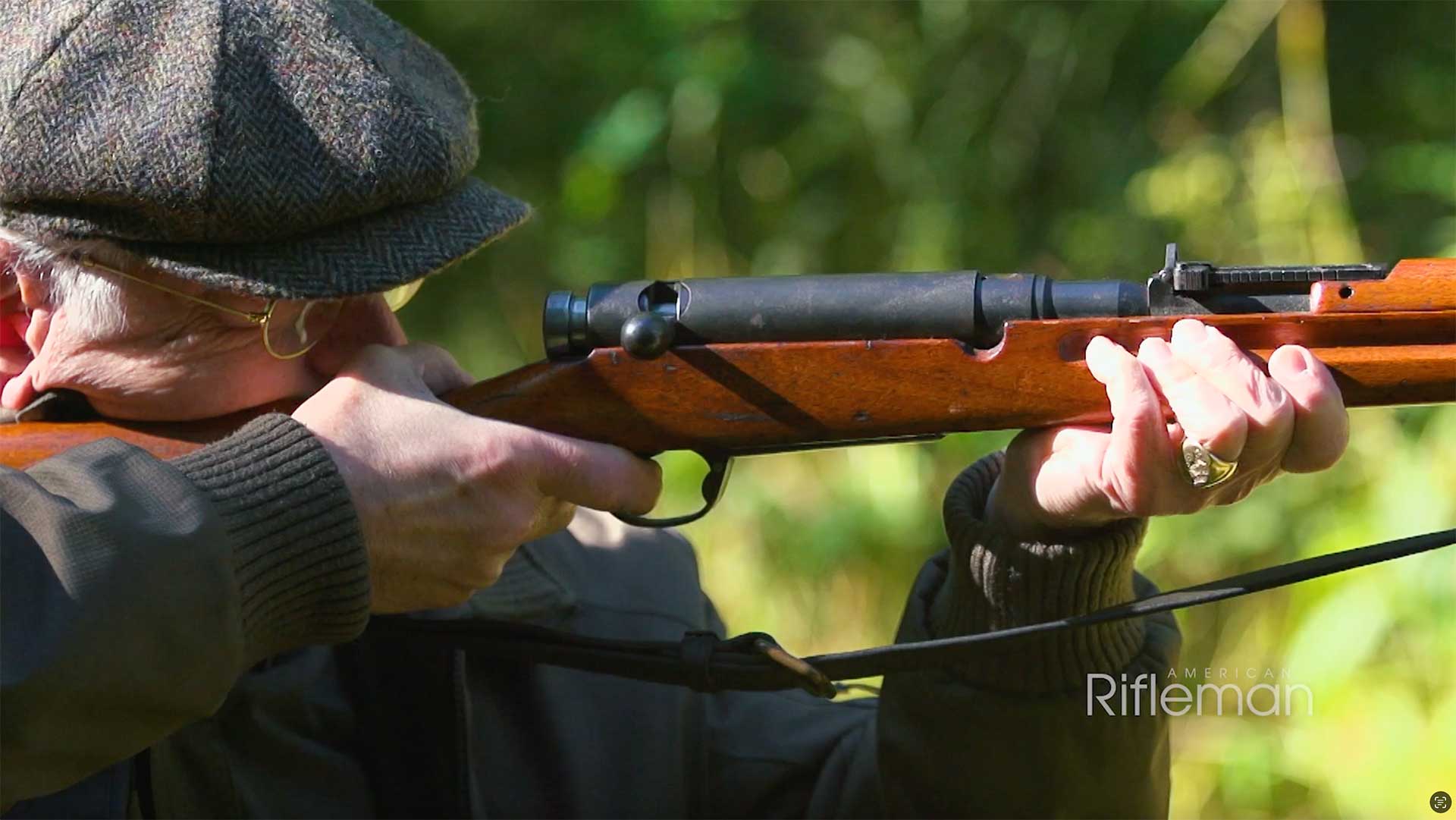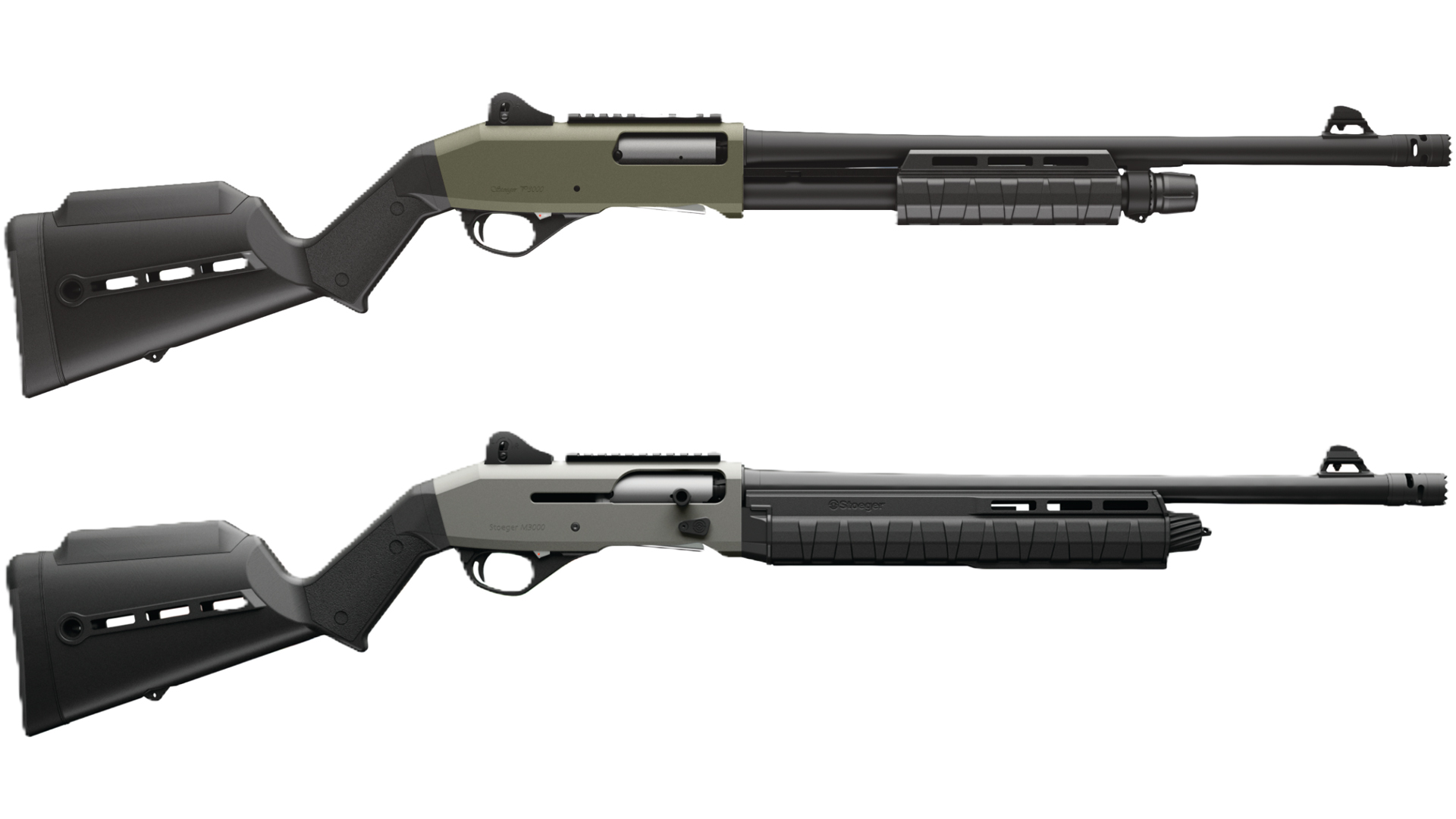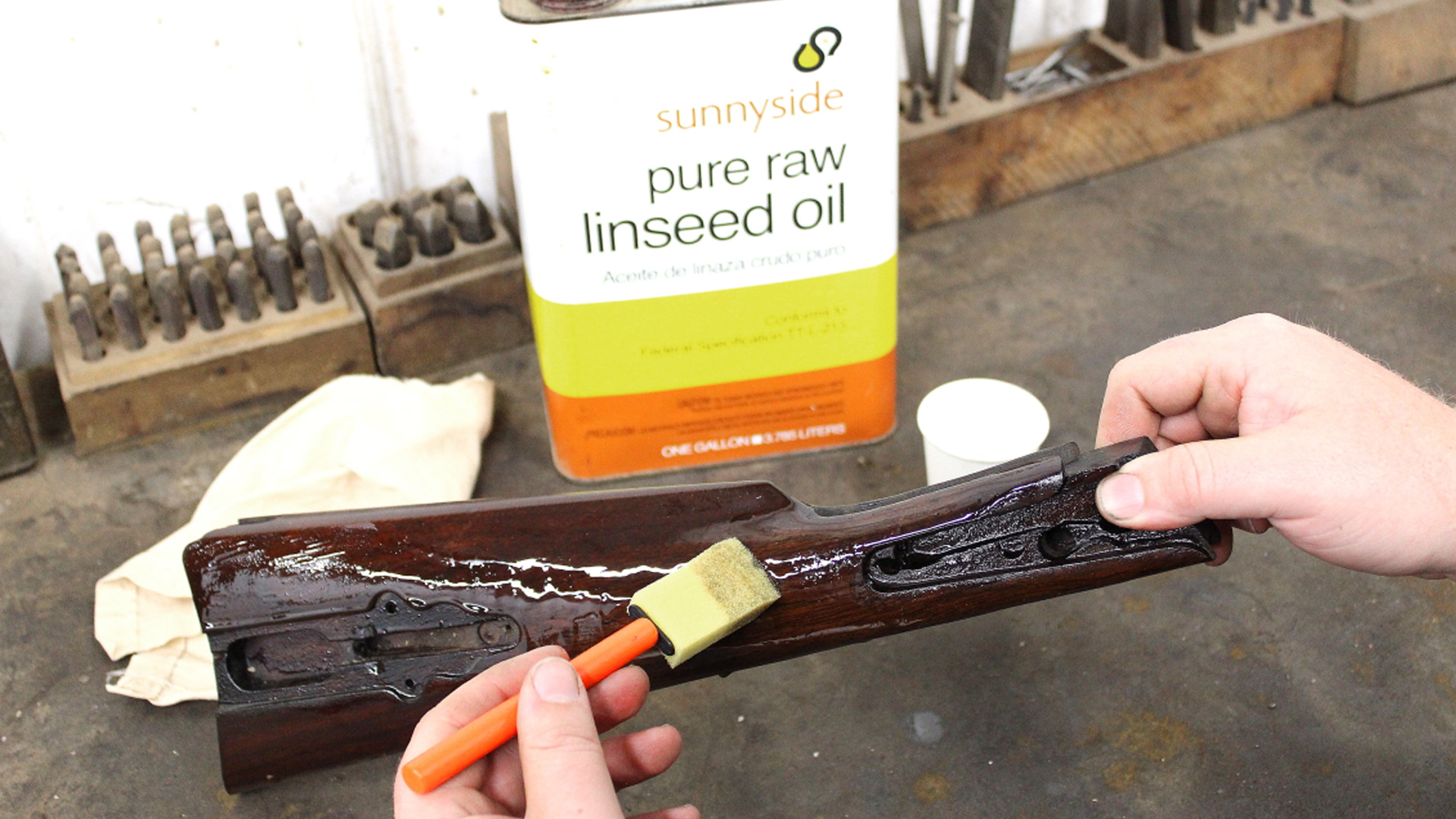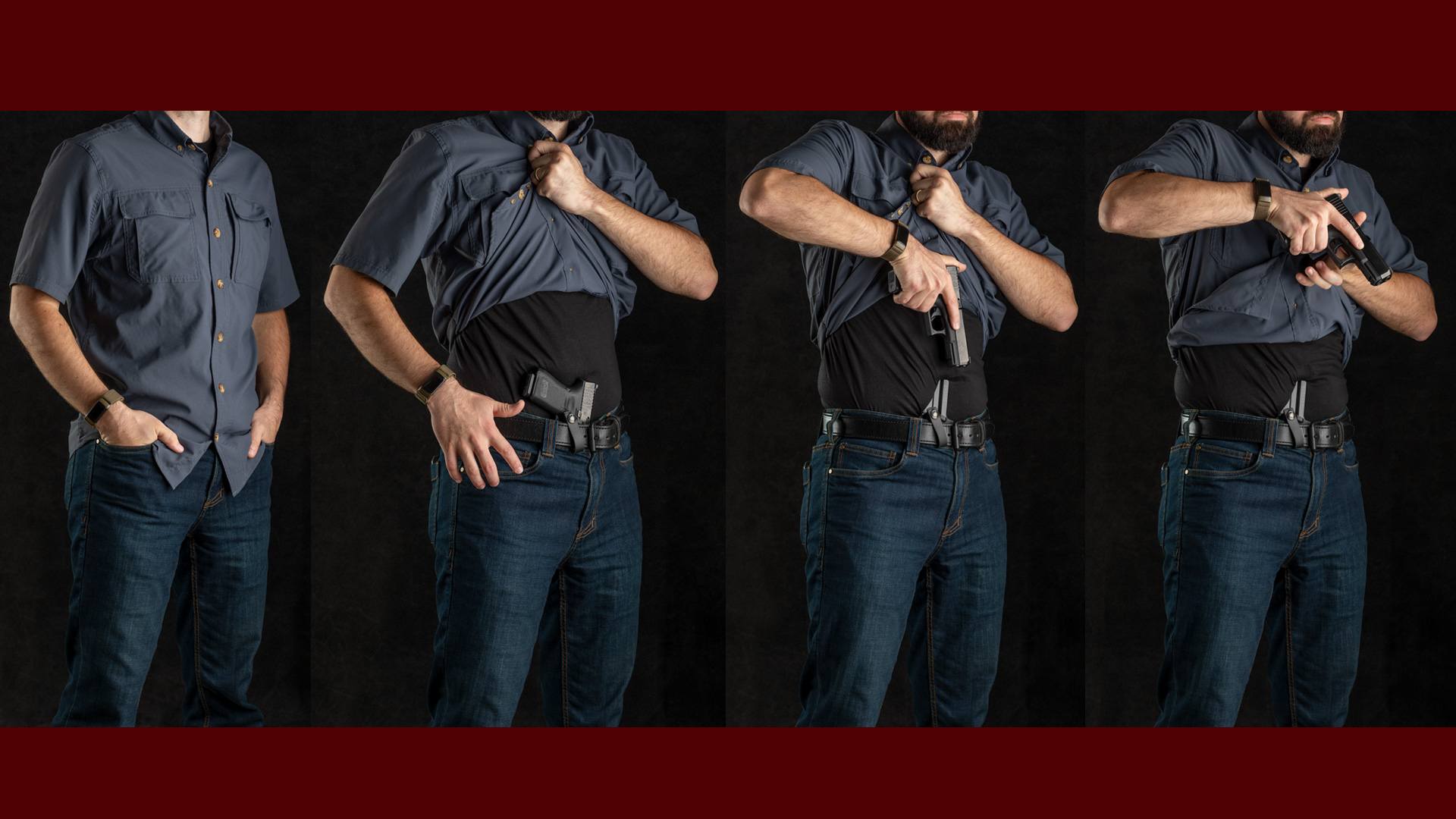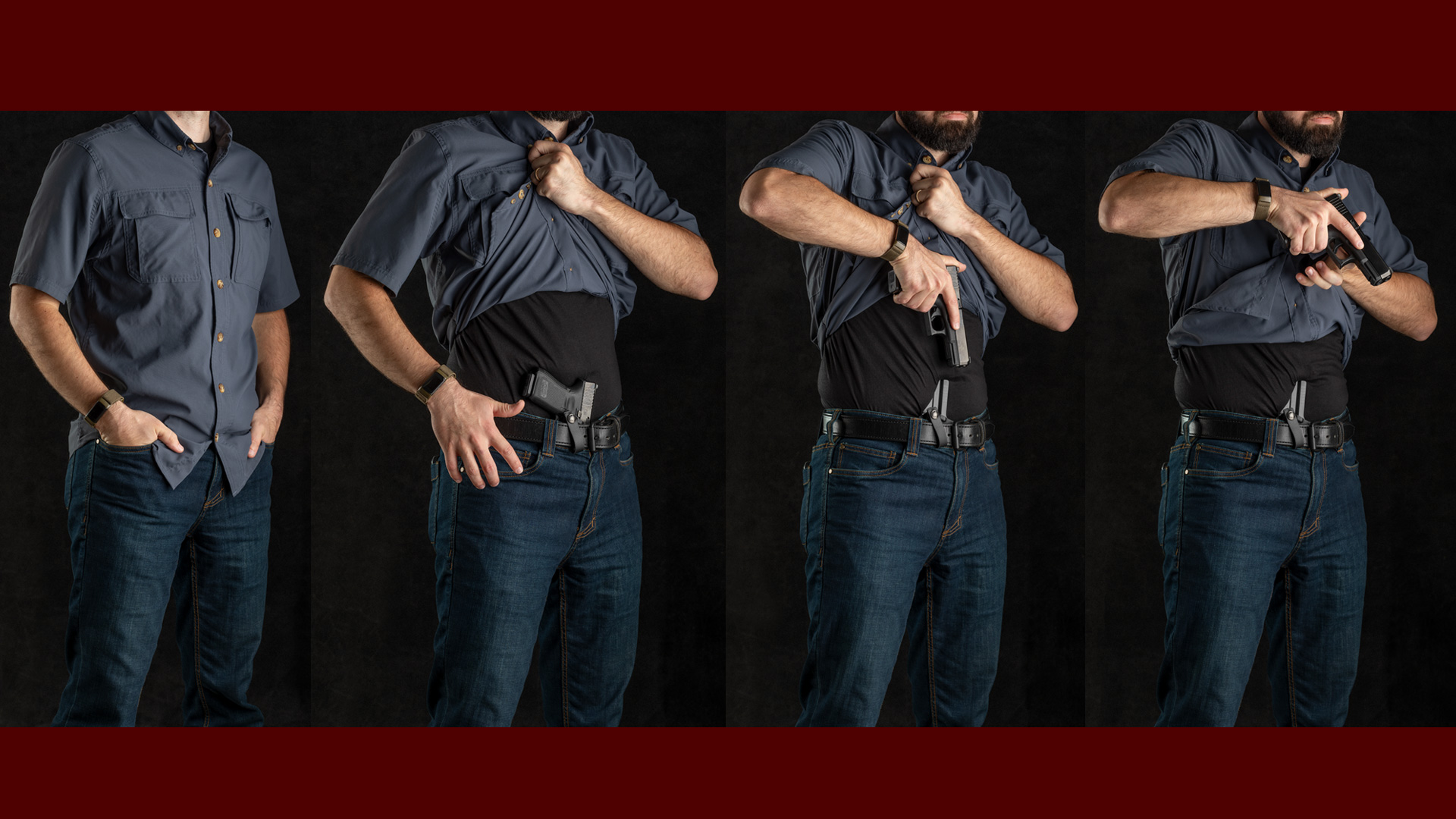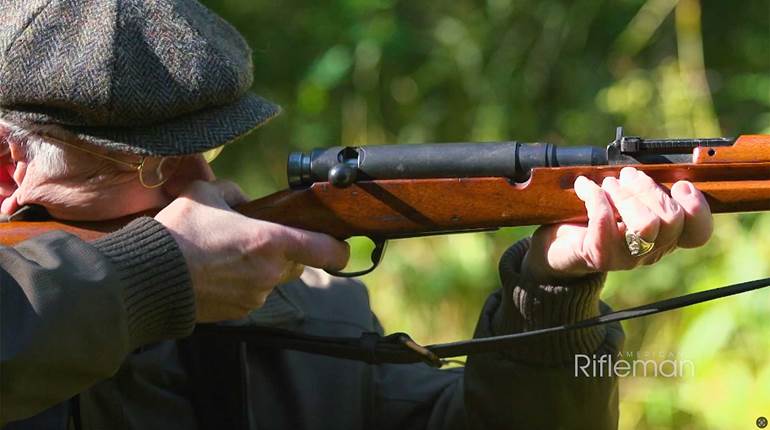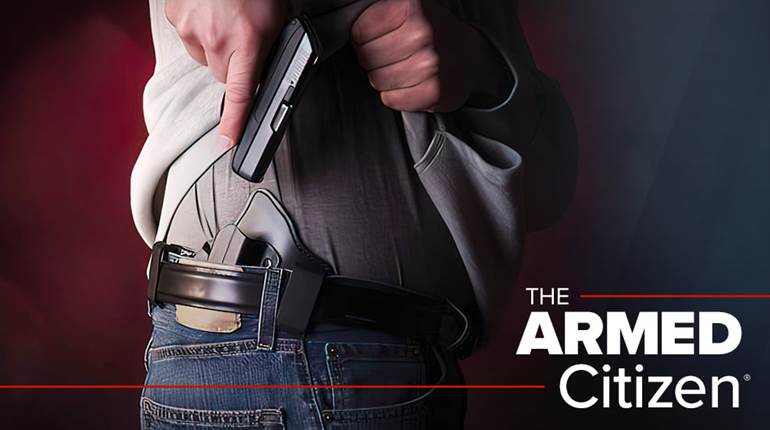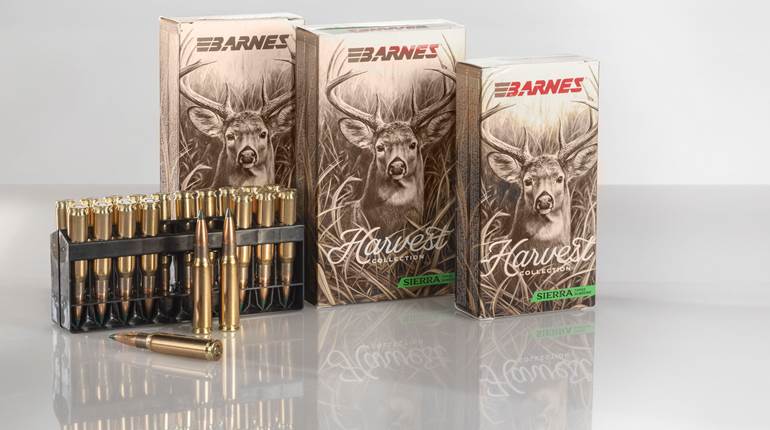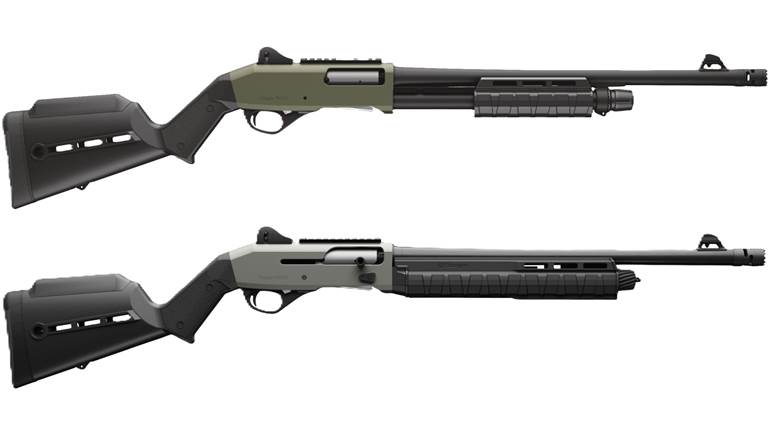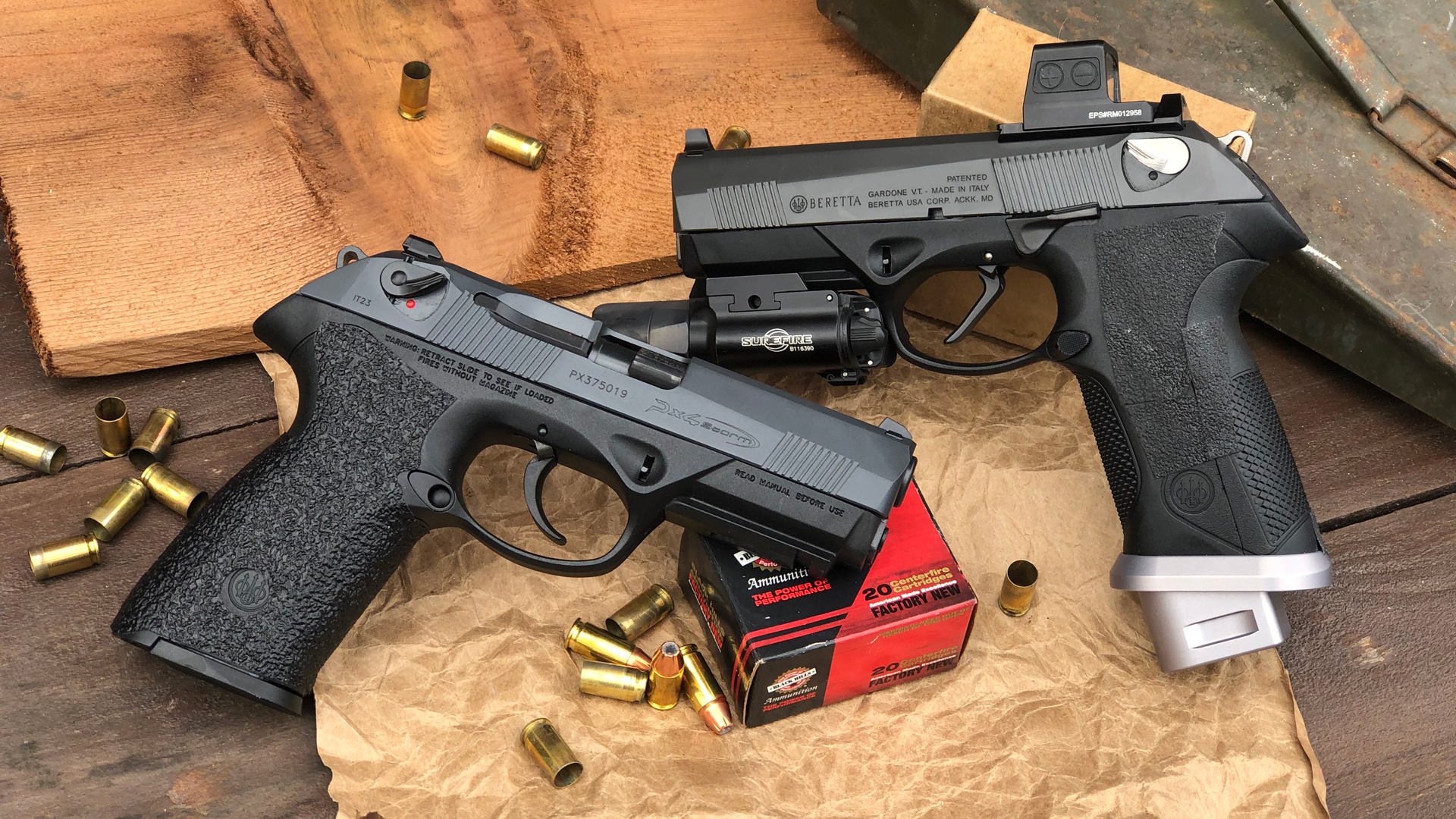
When introduced in 2004, the PX4 Storm was to be the polymer-frame successor to the iconic Beretta 92FS. Introduced at the peak of demand for .40 S&W and .357 SIG service semi-autos, the PX4 took the best of the established Beretta DA/SA models and added a polymer frame and a robust rotary locking action well suited to the higher-pressure cartridges.
The Storm saw wide adoption across Europe and South America but never quite "broke out" in the States. Timing is everything, and many a great model has been caught in the rip tide of market trends. Glock was ushering in the dominance of striker-fired semi-autos in law enforcement, and DA/SA semi-autos went from peak trend to passé. The only thing deader at the time was a revolver. Cycles are a thing, and in 2024, both revolvers and DA/SA autos are very active market segments with some of the strongest interest. The PX4 is finally getting its due.
I carried a PX4 Compact Carry as my everyday concealed pistol for several years and am a great fan of the design. That model remains the most shootable compact handgun I’ve fired, and it is only the comparative thinness of the new micro 9 mm slimline pistols that lured me away from the design.
For the 20th anniversary, Beretta announced upgrades to both the Compact Carry model and the full size. The full-size addition is the PX4 G-SD, the "G" in Beretta speak signifying a decocker rather than a decocking safety. Additional updates, aside from the bilateral slide-mounted decocker, include a thicker medium heavy barrel, a high visibility orange-dot front sight, low-profile controls and the inclusion of a Talon wraparound adhesive grip. The 17+1 capacity 9 mm Luger pistol retains the 4" barrel of previous models and ships with two 17 rounders and a 20-round extended magazine.

The PX4 feels good in the hand. Even better, it suits my hand almost perfectly in shooting. Some models feel great in the hand in casual handling but may not anchor as well on a tight shot or return as predictably in recoil. The new G-SD model feels good, and it fits great. There are few pistols that I can handle as confidently, even models I am sentimentally attached to. I wear an XL glove and am happy with either the medium or large backstrap on the PX4. The small backstrap makes the overall package slim enough to work well for the other end of the hand-size spectrum.
The Talon grip is a welcome inclusion. I have used the rubbery adhesive wrap around on the PX4CC for years and found it to be durable and effective. The Beretta’s frame is rather slick and is one area where the PX4 takes criticism. The latest generation polymer guns from most of the makers are on their second, third or fourth iteration of more effective/aggressive texture; the new Storm addresses this by providing the Talon grip.
Between the rotary barrel and being hammer-fired, the slide of the PX4 racks smoothly and easily. The double-action trigger breaks at 8.5 lbs. and the single-action at 4.9 lbs. The latest iteration of the PX4 is arguably the most accessible DA/SA pistol for those who are new to "trigger-cocking" the initial shot. The double-action stroke is just light enough and moves over just enough distance to let shooters easily get a feel for the arc to release the hammer. Once the shooter is past the initial shot, the remaining shots each have a very shootable single-action break: light resistance to a predictable wall of sear engagement and then slight movement over a nice break at about 3.5 lbs.
After so many years on the various Beretta M9/92 series and PX4CC models, the new G-SD was like meeting a new friend who I felt like I’d known for years. The new controls are well-shaped and placed, addressing the main complaint I had about the original Storms. The balance with the now-heavier barrel is improved to my liking, and the recoil is even softer than the previous full-size models. One of the quirks about the PX4: most shooters found the compact carry model to be almost magically soft shooting and thought that the full-size must be even softer, only to realize that the full-size didn’t have the same "pixie dust." The new G-SD closes that expectation gap.
Ernest Langdon, a many-time champion in multiple pistol disciplines, did much to promote the PX4 and bring awareness to the platform’s potential. In 2018, he took a PX4 to 50,000 rounds to document the platform’s reliability. His company, Langdon Tactical Technology (LTT), has been offering everything from aftermarket parts and upgrades to full-custom packages on the Storm. I did most of my shooting on a fully decked-out LTT G-SD model that boasts just about all of the upgrades possible. The LTT PX4 I used has the company's proprietary low red-dot optic mount, a flat trigger bow, match trigger bar, magwell update and an NP3-coated custom crowned barrel, along with the action being tuned and polished.
 The custom G-SD model is a high-performance pistol. Over the course of a year, the author taught with the PX4, using it as a training aid in classes and enjoyed using it.
The custom G-SD model is a high-performance pistol. Over the course of a year, the author taught with the PX4, using it as a training aid in classes and enjoyed using it.
The first impression of the pistol was how softly it shoots. Despite its relatively light polymer frame, it recoils much like a heavier, steel-frame match pistol. The rotary barrel’s recoil impulse is a bit different; there is relatively little muzzle flip and much less torque in the firing grasp than well-regarded platforms a half-pound or more heavier. I shot the PX4 side-by-side with heavier, 2011-style pistols and, multiple heavier, metal-frame DA/SA pistols from Beretta and CZ, and the PX4 is noticeably softer and faster back onto target for me. I do find the PX4 to push back into the web of my hand ever so slightly more, presumably a function of the rotary barrel’s unlocking moving on the same axis.
The next standout feature is the trigger. I found the stock to have a highly shootable double-action stroke and a very solid single-action break. The custom LTT model built upon that to unexpected levels. LTT worked with Grayguns on the flat trigger and arrived at what might be the most shootable trigger I’ve experienced in a DA/SA pistol. The flat trigger is terribly awkward-looking in the trigger guard, to my eye, and feels strange at first to one long accustomed to a more traditional curved part; however, I quickly found a sweet spot on the flat trigger that allowed me to do some of the best double-action shooting I’ve accomplished. It has a well-tuned 6.9-lb. stroke. Better yet, I found that spot was easy to find, time and time again.
As the action cycles and the hammer is cocked for the subsequent single-action shots, the flat trigger breaks in a very favorable location at nearly 90 degrees. The single-action break is 3.5 lbs. and is crisp with just enough roll through the break to allow the shooter to do great work. The flat trigger puts the single-action break in a nearly perfect position in my hand. The overall feel of the break and short reset effectively challenge custom 1911/2011 triggers for what "ideal" feels like.
The latest PX4s uphold Beretta’s hard-earned reputation for accurate pistols. I fired three groups each through the LTT G-SD at 25 yards with four different loads yielding an overall average of just 1.73", as seen below. Nine of the twelve groups measured under 2". One five shot cluster of Black Hills jacket hollow points cut just barely under an inch at 0.99".

I was able to shoot the factory G-SD model a notch or two above expectations for stock duty pistols across all of my standard drills. The custom Langdon rendition quickly began setting milestones and performing at the best I am capable of in several scenarios. A simple representative example is where I was looking to check the possibility of headshots with the DA first shot. I backed off to 25 yards with the stock G-SD and fired five double-action shots, decocking in between and firing at a nice deliberate pace. The smallish head of an old steel silhouette caught a group that couldn’t have more perfectly resembled the stereotypical smiley face. The five splatters clustered about 3" apart and mixed in perfectly with some .22 rimfire splats already there made accidental artwork.
I backed up to 40 yards with the LTT customized Storm and fired a similar deliberate salvo of DA shots. The flat trigger gave excellent control all the way to the break and the dot stayed tightly in the center of the roughly 6" square. With each hammer fall a 140-grain S&B flat-point rang the steel, producing such similar tones that I knew the group must be tight.
I shot the LTT customized G-SD model in Pistol-Training’s inaugural On Demand Performance class this summer at Meadhall Range in Oklahoma. The class consisted of some very talented shooters and focused on “technical excellence and cold performance,” as the course description reads. The instructor, SLG, is a longtime friend and an excellent teacher. He pushed us to perform to high levels on demand and shared techniques, training tips and approaches for shooters to be able to shoot to high levels more consistently and without warmup.
One of the students in that class was Matt Rakestraw, a very serious student of the handgun. Matt has been taking classes from many of the prominent trainers in the market and documenting what he has learned and his skills progression. I first met Matt in a closed event I taught in Texas last year, and I shot next to him for the Pistol-Training class. Shortly after the class, Matt grabbed a fully customized PX4 G-SD from Langdon Tactical and began shooting it.

In the short months wthat followed, Matt achieved two noteworthy milestones with that Beretta. First, in a class by Gabe White, he became one of only two shooters to ever clear Gabe’s difficult "Turbo" pin standards, with eight passing runs of eight attempts. Turbo is a level of difficulty most shooters will never reach, and those who do usually have at least one of the eight runs which do not make the grade (the best four runs count for the pin).
The next milestone is doubly impressive. In a Modern Samurai Project class, Matt made the "Black Belt" standards, one of only a few dozen shooters to achieve that level and the first to do so with a DA/SA pistol. Achieving these two benchmarks is a huge testament to Matt’s shooting ability. That he cleared those two very high bars with a pistol he just recently switched to speaks volumes about the new G-SD model PX4. I asked Matt about the new Beretta to get his thoughts.
Matt mentioned that he found the PX4 to be very fast to the first shot from the holster. Longtime DA/SA shooters will second this notion, which may seem counterintuitive, but an experienced DA/SA shooter can combine motions to begin "steering" the shot through the trigger as the pistol nears its full extension. Matt found the shape of the PX4 and the low LTT dot mount provided him an extra edge on rapid dot acquisition required on both tests, each of which have stages requiring a sub-1-second concealed draw to a 7-yard target.
Compared to a typical striker-fired semi-auto in the PX4’s weight class, Matt found that he saves time across several shots due to a combination of the soft impulse and the single-action trigger. “Because of this time save with the PX4, I can put more concentration into ensuring I have the right sight confirmation while actually shooting. Mentally this allows me to put more effort into correctly managing my sights. It’s slight, but I found it helps make a big difference especially when shooting under pressure.”
Matt elaborated, “When shooting my striker-fired guns for tasks that matter to me, I have to shoot near the ‘red line’ of concentration because I have to put more perceived concentration into being aware of the dot and triggering the gun. With the PX4, all I have to do is be aware of the dot and use the appropriate sight confirmation because triggering the gun is so easy. When I do have to be aware of the trigger, such as shooting on small or high-risk targets, it’s still easier to manage the excellent single-action trigger than with a striker-fired gun.”

To balance out all of the accolades, let me address some of the PX4’s flaws. I find it to be a tad slower and more difficult to reload than many other platforms. This can be worked through, but many companies have been refining their pistols’ magwell shapes over multiple generations and getting better as they go. The Storm was slightly behind in this regard in 2004 and is well behind now.
The PX4 can absolutely be carried concealed, but it is one of the thicker options on the market, measuring 1.42" at the wide point. A good holster is an absolute must. There are several high quality holster makers supporting the PX4, but a shooter isn’t likely to find a value holster at the local store.
The last gripe for many will be that the PX4 is not available from Beretta with an optics-ready model. For that, a shooter has to go to Langdon Tactical and pay for the custom upgrade. The LTT optics mount is excellent, providing a surprisingly low mount that feels right at home on the PX4. However, the amount of work required to cut and modify the slide carries a commensurate cost.
The Beretta 92 is such an iconic and great-shooting pistol that it was always going to be tough for the younger sibling PX4 to get a fair look on its own merits. It has taken every bit of 20 years, but I am happy to see this under-appreciated platform getting some of the limelight. The new PX4 G-SD is a standout and a fantastic upgrade for the anniversary.












